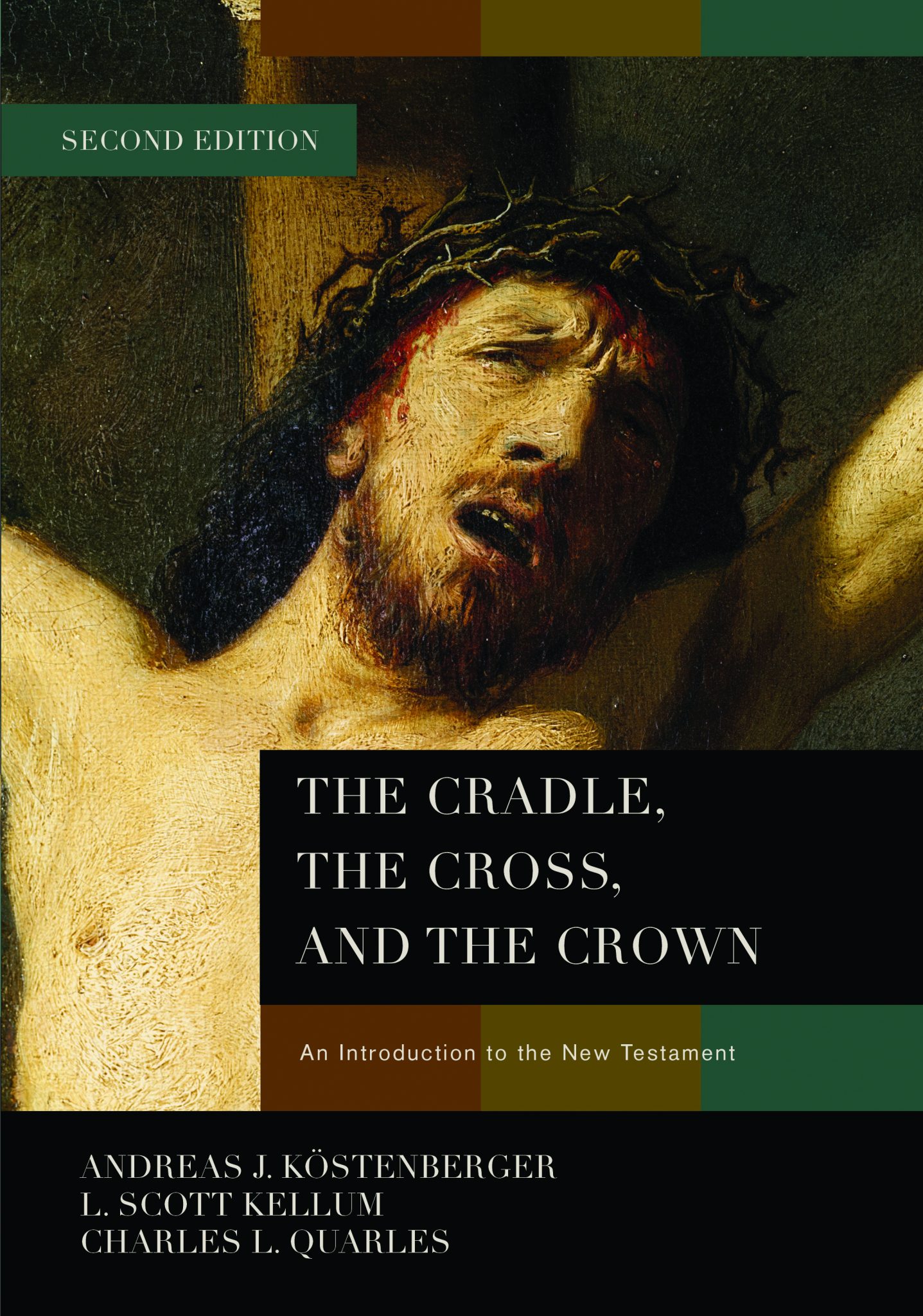This review was originally published in Themelios.
Numerous introductions to the New Testament (NT) continue to appear, which is hardly surprising since they serve as textbooks in beginning NT classes. The Cradle, the Cross, and the Crown: An Introduction to the New Testament may be the best of the recent crop. The work begins with a useful study of Scripture and the canon, which is fitting given the claims made by the documents studied. The second chapter ably surveys the historical context in which the NT was written, which is a very helpful addition for professors who want to expose students to the NT world but do not wish to add another book to the required reading list.
The heart and soul of the work examines each book in the NT, and the authors are to be commended for creativity and appropriate depth. The outline for each chapter is the same: they examine history (author, date, situation), literature (structure, outline and survey of the book), and theology (key theological themes).
The book is nicely packaged with a creative layout so that the reader is treated to maps, sidebars, charts, and other features that are inviting. Introductions are not typically exciting books to read, but the authors have done a fine job of writing in a style that is accessible for ordinary readers. For instance, each chapter begins by distinguishing between basic, intermediate, and advanced knowledge of the subject matter, explaining clearly what level of knowledge fits with each category.

The Cradle, the Cross, and the Crown: An Introduction to the New Testament
Andreas J. Köstenberger, L. Scott Kellum, and Charles L. Quarles
The Cradle, the Cross, and the Crown: An Introduction to the New Testament
Andreas J. Köstenberger, L. Scott Kellum, and Charles L. Quarles
The Cradle, the Cross, and the Crown guides serious New Testament students through the historical, literary, and theological dimensions of the biblical text, allowing them to better understand and share God’s “word of truth” (2 Tim. 2:15). It offers a thorough introduction to all 27 books of the New Testament and closely examines events such as Christ’s incarnation and virgin birth, his crucifixion and resurrection, and triumphant return.
Another feature that makes the book user-friendly is a chart at the beginning of each chapter that itemizes key facts, such as, author, date, provenance, destination, occasion, theme, purpose, theme, and key verses. Each chapter also concludes with bullet points that summarize what the book in question contributes to the canon and then lists a number of study questions that assist the reader in reviewing major points in the chapter. Each chapter also contains a section called “Something to Think About,” which applies some truth of the book to the reader.
The book is not only user-friendly; it represents careful and up-to-date scholarship. For instance, they helpfully survey and evaluate the quests of the historical Jesus (including the third quest), the recent spate of alternate Gospels (mainly gnostic) that are proposed today, and the New Perspective on Paul. These discussions will surely prove to be useful to students as they navigate current controversies. Many introductions treat only historical issues, and the authors of this volume engage such questions with appropriate depth. The book is enriched, however, by the study of the major theological themes of each book, which I found to be particularly helpful. Furthermore, the bibliographies that conclude each chapter are up-to-date and useful.
Theologically, the authors are clearly conservative evangelicals. They defend the historical reliability of the Gospels and the authenticity of the sayings of Jesus. Acts is not merely an edifying narrative but is also true to history. Many scholars now accept pseudonymity in the NT, particularly in 2 Peter and the Pastoral Epistles, but the authors of this volume (rightly in my judgment) reject pseudepigraphy, arguing that pseudonymous documents were not accepted as canonical. The approach of the authors hermeneutically is quite traditional: each chapter particularly focuses on the history of the document under consideration. The influence of Guthrie and more recently Carson, Moo, and Morris is evident. The focus on history, though denigrated by some today, is salutary since the NT books are earthed in a particular historical and social context.
No book is perfect of course. History and theology are handled very well in this volume, but it would be helpful if the literary structure of each book received more discussion. Typically this section of the book is quite brief and is followed by an outline of the book and a survey of its contents. The book is already quite long, and so one can understand that the authors did not want to lengthen it further. Perhaps, though, the history section could be abbreviated and the authors could tackle more profoundly the literary arrangement of each book.
I was a bit surprised that in the discussion of eschatology in Thessalonians that the writers affirm that premillennialism is supported by the teaching that church will suffer near the end (455). Whatever one’s view on the millennium, it is mystifying why this argument fits only with premillennialism. Virtually all amillennialists think the church will suffer greater persecution before Christ returns as well. I also found the discussion on how faith and works cohere in Paul and James a bit thin (721–22).
Certainly no one will agree with everything in a book that is so comprehensive. We can be thankful for the scholarship, the reverence for God’s word, and the accessibility of this volume. I suspect it will be adopted as a text in many classes.
































